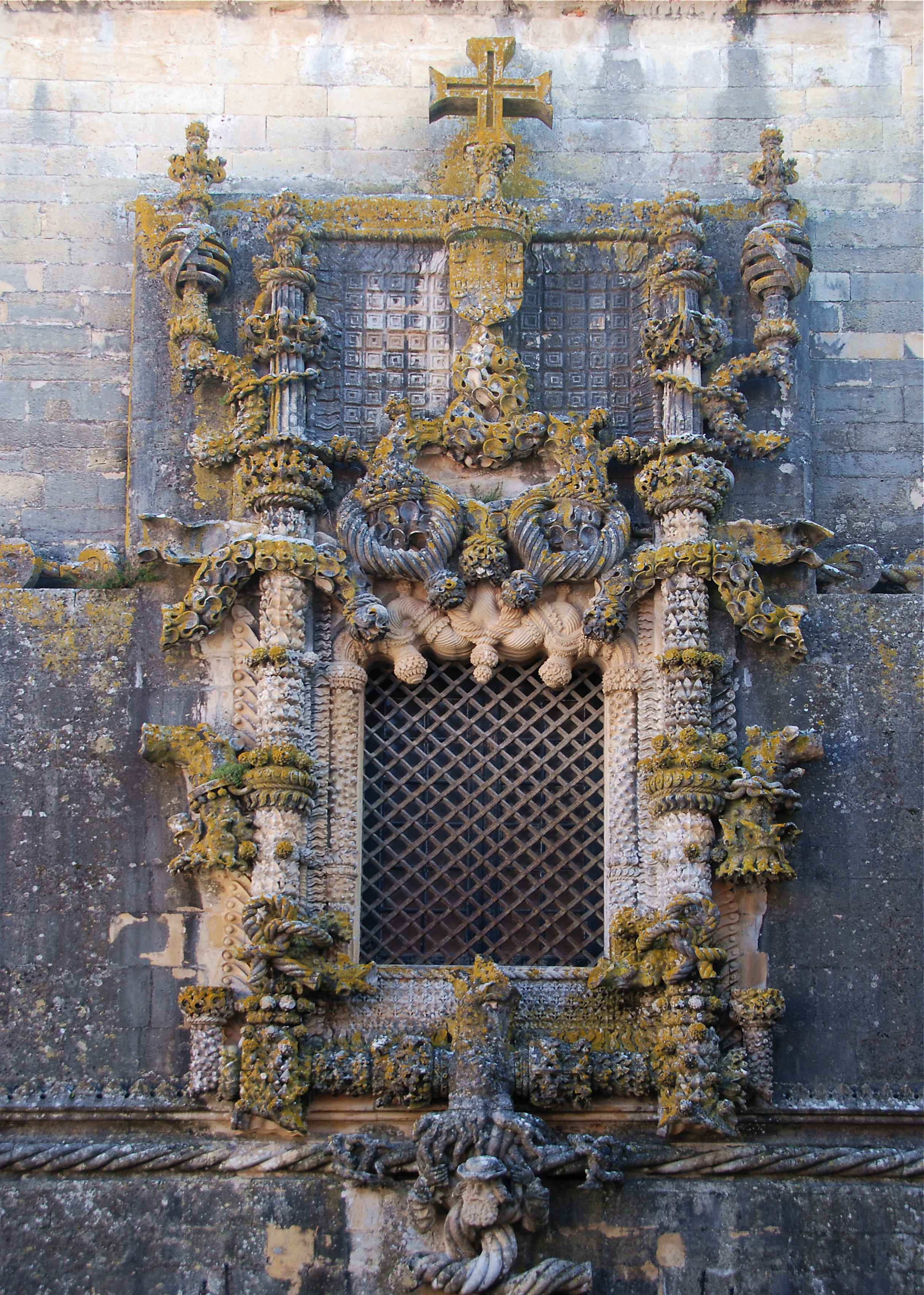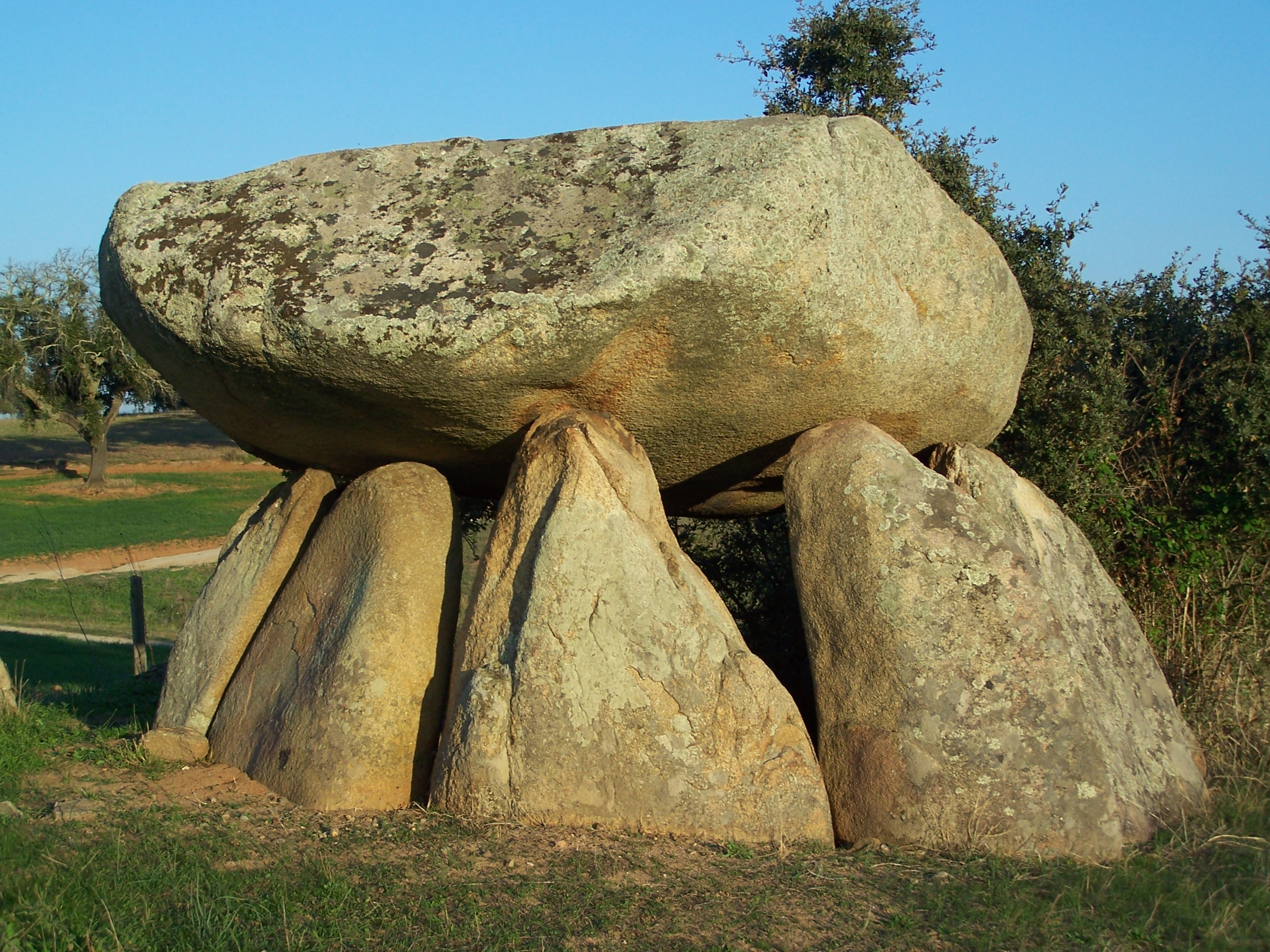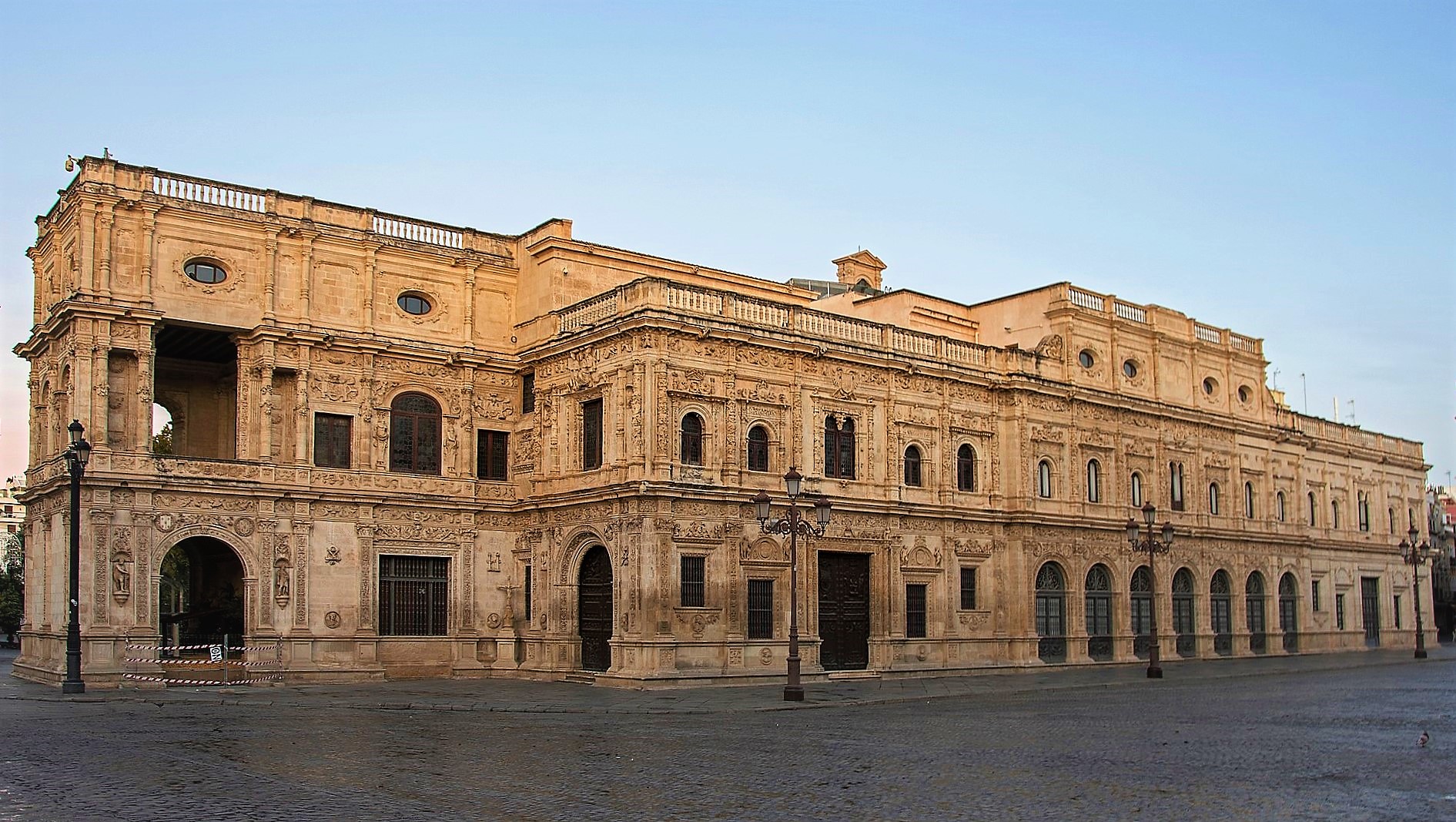|
Manueline
The Manueline (, ), occasionally known as Portuguese late Gothic, is the sumptuous, composite Portuguese architectural style originating in the 16th century, during the Portuguese Renaissance and Age of Discoveries. Manueline architecture incorporates maritime elements and representations of the discoveries brought from the voyages of Vasco da Gama and Pedro Álvares Cabral. This innovative style synthesizes aspects of Late Gothic Flamboyant architecture with original motifs and influences of the Plateresque, Mudéjar, Italian, and Flemish architecture. It marks the transition from Late Gothic to Renaissance. The construction of churches and monasteries in Manueline was largely financed by proceeds of the lucrative spice trade with Africa and India. The style was given its name, many years later, by Francisco Adolfo de Varnhagen, Viscount of Porto Seguro, in his 1842 book ''Noticia historica e descriptiva do Mosteiro de Belem, com um glossario de varios termos respectivos ... [...More Info...] [...Related Items...] OR: [Wikipedia] [Google] [Baidu] |
Portuguese Architecture
Portuguese architecture refers to both the architecture of Portugal's modern-day territory in Continental Portugal, the Azores and Madeira, as well as the architectural heritage/patrimony of Portuguese architects and styles throughout the world, particularly in countries formerly part of the Portuguese Empire. Like all aspects of Portuguese culture, Portuguese architecture reflects the artistic influences of the various cultures that have either inhabited Portugal or come in contact with the Portuguese people throughout the history of Portugal, including the Gallaecians, Lusitanians, Celtiberians, Ancient Rome, Romans, Suebi, Visigoths, Moors, Architecture of Goan Catholics, Goans, Macanese people, Macanese, Kristang people, and many more. Because of the history of the Portuguese Empire, several countries across the world are home to sizable heritages of Portuguese colonial architecture, notably Brazil and Uruguay in the Americas, Angola, Cabo Verde, São Tomé and Príncipe, Be ... [...More Info...] [...Related Items...] OR: [Wikipedia] [Google] [Baidu] |
Jerónimos Monastery
The Jerónimos Monastery or Hieronymites Monastery (, ) is a former monastery of the Hieronymites, Order of Saint Jerome near the Tagus river in the parish of Santa Maria de Belém, Belém, in the Lisbon Municipality, Portugal. It became the necropolis of the Portuguese royal dynasty of House of Aviz, Aviz in the 16th century but was Secularization (church property), secularized on 28 December 1833 by state decree and its ownership transferred to the charitable institution, Real Casa Pia de Lisboa. The Jerónimos Monastery is one of the most prominent examples of the late Portuguese Gothic architecture, Portuguese Gothic Manueline, Manueline style of architecture in Lisbon. It was erected in the early 1500s near the launch point of Vasco da Gama's Portuguese discoveries, first journey, and its construction funded by a tax on the profits of the yearly Portuguese India Armadas. In 1880, da Gama's remains and those of the poet Luís de Camões (who celebrated da Gama's first voyage ... [...More Info...] [...Related Items...] OR: [Wikipedia] [Google] [Baidu] |
Belém Tower
Belém Tower (, ; literally: Bethlehem Tower), officially the Tower of Vincent of Saragossa, Saint Vincent () is a 16th-century fortification located in Lisbon that served as a point of embarkation and disembarkation for Portuguese explorers and as a ceremonial gateway to Lisbon. This tower symbolizes Portugal's maritime and colonial power in early modern Europe. It was built during the height of the Portuguese Renaissance, and is a prominent example of the Portuguese Manueline style, but it also incorporates other architectural styles, such as the minarets, which are inspired by Moorish architecture. The structure was built from lioz limestone and is composed of a bastion and a , four-storey tower. Since 1983, the tower has been a UNESCO World Heritage Site, along with the Jerónimos Monastery. It is often portrayed as a symbol of Europe's Age of Discoveries and as a metonym for Portugal or Lisbon, given its landmark status. It has incorrectly been stated that the tower was b ... [...More Info...] [...Related Items...] OR: [Wikipedia] [Google] [Baidu] |
Batalha Monastery
The Monastery of Batalha () is a Dominican convent in the municipality of Batalha, historical Beira Litoral province, in the Centro of Portugal. Originally, and officially, known as the ''Monastery of Saint Mary of the Victory'' (), it was erected in commemoration of the 1385 Battle of Aljubarrota and would serve as the burial church of the 15th-century Aviz dynasty of Portuguese royalty. It is one of the best and original examples of Late Flamboyant Gothic architecture in Portugal, intermingled with the Manueline style. The monastery is a historic and cultural monument and was listed as a UNESCO World Heritage site in 1983. History The monastery was built to thank the Virgin Mary for the Portuguese victory over the Castilians in the Battle of Aljubarrota in 1385, fulfilling a promise of King John I of Portugal. The battle put an end to the 1383–1385 Crisis. It took over a century to build, starting in 1386 and ending circa 1517, spanning the reign of seven kings. It too ... [...More Info...] [...Related Items...] OR: [Wikipedia] [Google] [Baidu] |
Monastery Of Jesus Of Setúbal
The Monastery of Jesus () is a historical religious building in Setúbal, Portugal, which served a monastery of Poor Clare nuns. It is one of the first buildings in the Manueline style, the Portuguese version of late Gothic architecture, Gothic. The cloisters of the complex houses a museum of the monastery (''Museu de Jesus''). In 2013, pan-European heritage organization Europa Nostra declared the monastery to be one of the 7 most endangered monuments in Europe. History The monastery was founded around 1490, outside the city walls of Setúbal, by Justa Rodrigues Pereira, a noblewoman of the Portuguese royal court. After 1491, John II of Portugal, King John II started sponsoring the building of the monastery, which he commissioned Diogo de Boitaca (or ''Boytac''), an architect of unknown origin, possibly French. After the death of John II in 1495, Manuel I of Portugal, King Manuel I continued supporting the construction works through an annual payment to Boitaca for his work on th ... [...More Info...] [...Related Items...] OR: [Wikipedia] [Google] [Baidu] |
Portuguese Renaissance
The Portuguese Renaissance was the cultural and artistic movement in Portugal during the 15th and 16th centuries. Though the movement coincided with the Spanish Renaissance, Spanish and Italian Renaissance, Italian Renaissances, the Portuguese Renaissance was largely separate from other European Renaissances and instead was extremely important in opening Europe to the unknown and bringing a more worldly view to those European Renaissances, as at the time the Portuguese Empire spanned the globe. As the pioneer of the Age of Discoveries, Portugal flourished in the 15th, 16th, and 17th centuries, with voyages to India, the Orient, the Americas, and Africa. This immense trade network would create an extremely wealthy Portuguese nobility and monarchy, that would become patrons for an immense flourishing of culture, arts, and technology in Portugal and all over the world. Context Diplomats, merchants, students, humanists, scholars, and artists, from all over Europe, were drawn to Por ... [...More Info...] [...Related Items...] OR: [Wikipedia] [Google] [Baidu] |
Manuel I Of Portugal
Manuel I (; 31 May 146913 December 1521), known as the Fortunate (), was King of Portugal from 1495 to 1521. A member of the House of Aviz, Manuel was Duke of Beja and Viseu prior to succeeding his cousin, John II of Portugal, as monarch. Manuel ruled over a period of intensive expansion of the Portuguese Empire owing to the numerous Portuguese discoveries made during his reign. His sponsorship of Vasco da Gama led to the Portuguese discovery of the sea route to India in 1498, resulting in the creation of the Portuguese India Armadas, which guaranteed Portugal's monopoly on the spice trade. Manuel began the Portuguese colonization of the Americas and Portuguese India, and oversaw the establishment of a vast trade empire across Africa and Asia. Manuel established the Casa da Índia, a royal institution that managed Portugal's monopolies and its imperial expansion. He financed numerous famed Portuguese navigators, including Pedro Álvares Cabral (who discovered Brazil), ... [...More Info...] [...Related Items...] OR: [Wikipedia] [Google] [Baidu] |
Setúbal
Setúbal ( , , ; ), officially the City of Setúbal (), is a city and a municipality in Portugal. The population of the entire municipality in 2014 was 118,166, occupying an area of . The city itself had 89,303 inhabitants in 2001. It lies within the Lisbon metropolitan area, about from Lisbon downtown by road. In the times of Al-Andalus, the city was known as ''Shaṭūbar'' (Andalusian Arabic: ), after the old pre-Roman name of ''Caetobriga''. In the 19th century, the port was called ''Saint Ubes'' in English, and ''Saint-Yves'' in French. The municipal holiday is 15 September, which marks the date in 1860 when Pedro V of Portugal, King Pedro V of Portugal officially recognised Setúbal as a city. City information The city of Setúbal is located on the northern bank of the Sado River estuary, approximately south of Portugal's capital, Lisbon. It is also the seat of the Setúbal District and formerly in the historic Estremadura Province (1936-1976), Estremadura Province. ... [...More Info...] [...Related Items...] OR: [Wikipedia] [Google] [Baidu] |
Coimbra
Coimbra (, also , , or ), officially the City of Coimbra (), is a city and a concelho, municipality in Portugal. The population of the municipality at the 2021 census was 140,796, in an area of . The fourth-largest agglomerated urban area in Portugal after Lisbon Metropolitan Area, Lisbon, Porto Metropolitan Area, Porto, and Braga, it is the largest city of the Coimbra (district), district of Coimbra and the Centro Region, Portugal, Centro Region. About 460,000 people live in the Região de Coimbra, comprising 19 municipalities and extending into an area of . Among the many archaeological structures dating back to the Roman Empire, Roman era, when Coimbra was the settlement of Aeminium, are its well-preserved aqueduct (watercourse), aqueduct and cryptoporticus. Similarly, buildings from the period when Coimbra was the capital of Portugal (from 1131 to 1255) still remain. During the late Middle Ages, with its decline as the political centre of the Kingdom of Portugal, Coimbra beg ... [...More Info...] [...Related Items...] OR: [Wikipedia] [Google] [Baidu] |
Flamboyant
Flamboyant () is a lavishly-decorated style of Gothic architecture that appeared in France and Spain in the 15th century, and lasted until the mid-sixteenth century and the beginning of the Renaissance.Encyclopedia Britannica, "Flamboyant style" (by subscription), accessed April 2024 Elaborate stone tracery covered both the exterior and the interior. Windows were decorated with a characteristic s-shaped curve. Masonry wall space was reduced further as windows grew even larger. Major examples included the northern spire of Chartres Cathedral, Trinity Abbey, Vendôme, Trinity Abbey, Vendôme, and Burgos Cathedral and Segovia Cathedral in Spain. It was gradually replaced by Renaissance architecture in the 16th century. The Period French scholars define Flamboyant as the fourth phase of Gothic style, preceded by Primary Gothic, Classic Gothic and Rayonnant Gothic. British and American historians describe it as a period of Late Gothic architecture, following Early Gothic architectu ... [...More Info...] [...Related Items...] OR: [Wikipedia] [Google] [Baidu] |
Chapel Of São Miguel
São Miguel Chapel or Saint Michael's Chapel (''Capela de São Miguel'', also called "''Capela da Universidade de Coimbra''" - "Coimbra University Chapel") is a chapel of the University of Coimbra in Coimbra, Portugal, which was founded (at another location) in 1290. In architectural style, it is Manueline or Portuguese late Gothic. The interior contains elaborate azulejo wall tiles, an altar with influences of Mannerism and an ornate Baroque organ. The chapel was originally part of the Royal Palace of Coimbra which was acquired by the university from the royal family in 1597. It retained royal privilege even after the purchase. History The current chapel replaced a small private chapel or oratory of the palace which was probably built in the 12th century. The project belonged to Marcos Pires, who designed the naturalistic Manueline side door, although he died in 1521 and his work had to be finished by Diogo de Castilho. The entrance to the chapel is through a neo-classical doo ... [...More Info...] [...Related Items...] OR: [Wikipedia] [Google] [Baidu] |
Plateresque
Plateresque, meaning "in the manner of a silversmith" (''plata'' being silver in Spanish language, Spanish), was an artistic movement, especially Architecture, architectural, developed in Spanish Empire, Spain and its territories, which appeared between the late Gothic architecture, Gothic and early Renaissance in the late 15th century and spread over the next two centuries. It is a modification of Gothic spatial concepts and an eclectic blend of Mudéjar art, Mudéjar, Flamboyant, Gothic architecture, Gothic, and Lombard architecture, Lombard decorative components, as well as Renaissance elements of Tuscany, Tuscan origin.Bozal, Valeriano; ''Art history in Spain: From the origins to the Enlightenment'', pp. 157, 165. Ed Akal (1978). . Examples of this syncretism are the inclusion of shields and pinnacles on façades, columns built in the Renaissance neoclassical manner, and façades divided into three parts (in Renaissance architecture they are divided into two). It reached its p ... [...More Info...] [...Related Items...] OR: [Wikipedia] [Google] [Baidu] |








